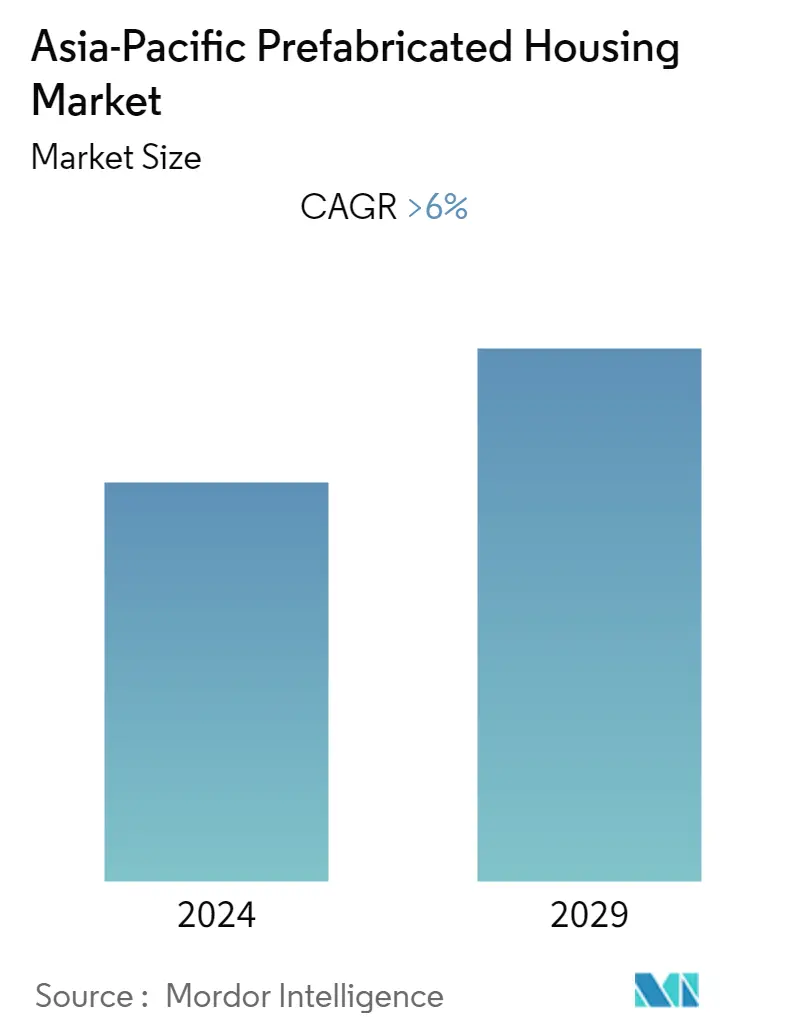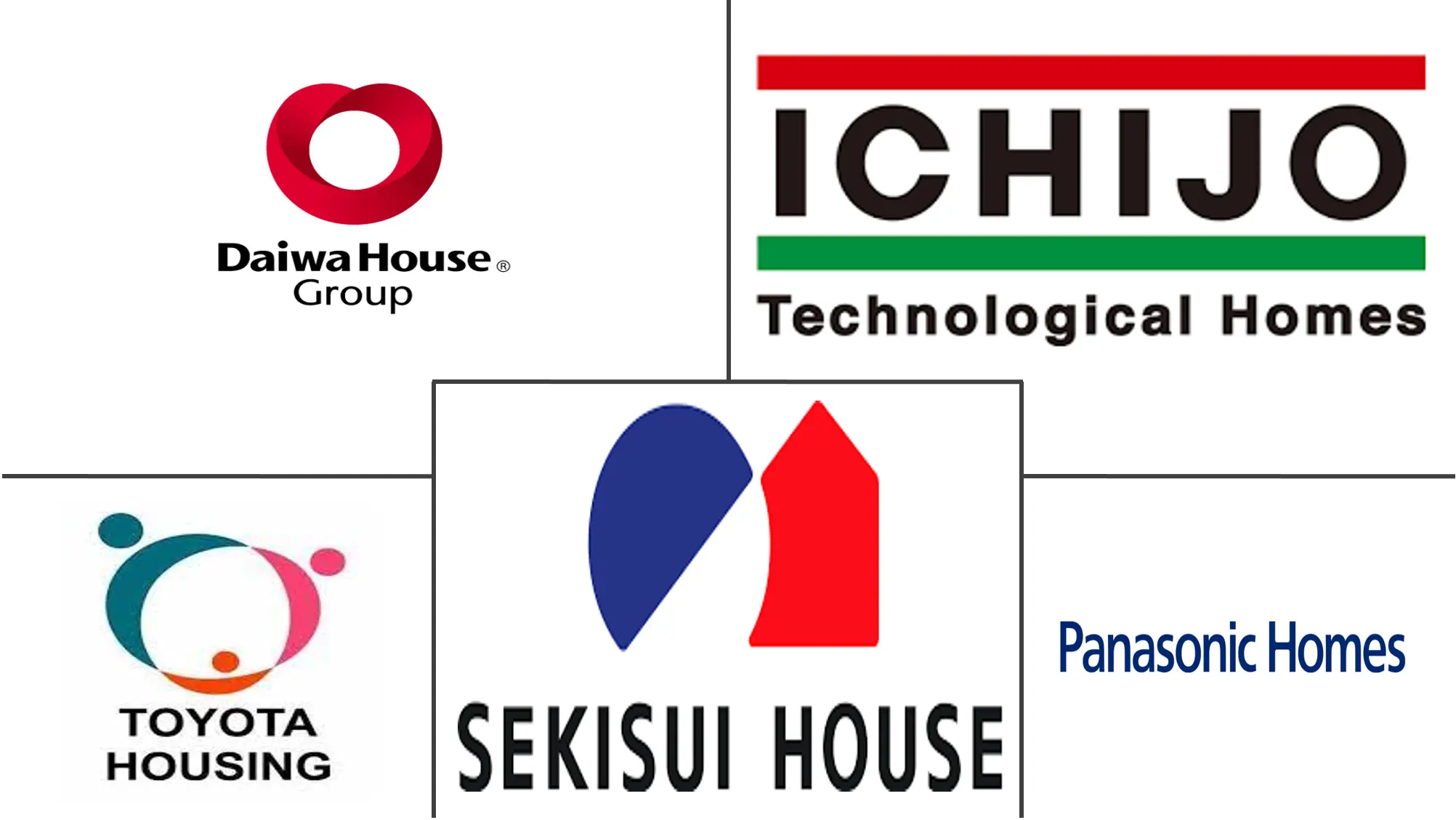Market Size of Asia-Pacific Prefabricated Housing Industry

| Study Period | 2020 - 2029 |
| Base Year For Estimation | 2023 |
| Forecast Data Period | 2024 - 2029 |
| Historical Data Period | 2020 - 2022 |
| CAGR | > 6.00 % |
| Market Concentration | Low |
Major Players
*Disclaimer: Major Players sorted in no particular order |
Need a report that reflects how COVID-19 has impacted this market and its growth?
APAC Prefabricated Housing Market Analysis
The Asia-Pacific Prefabricated Housing Market is anticipated to register a CAGR of more than 6% over the forecast period. The market is driven by the increasing demand for housing and cost-effective construction in the region. Furthermore, the market is driven by the advancement in technology in the construction of houses and sustainability.
- The emphasis on cost savings is a major driver of the single-family modular and prefabricated housing construction market's growth. Modular design can reduce project deadlines by up to 50% and costs by 20%. They result in higher productivity and lower labor costs associated with purchasing units along a production line. Building Information Modeling (BIM) implementation in modular construction is a new trend in the single-family modular and prefabricated housing construction market. Building Information Modeling (BIM) is a ground-breaking method for designing, constructing, and managing construction models. Transportation risks are a major factor influencing the growth of the single-family modular and prefabricated housing construction market. Because modules are manufactured in a factory away from the worksite, they must either be transported specifically to the construction site or assembled in a surrounding venue and then set up.
- The ability to complete projects faster than traditional on-site buildings is a major factor driving the growth of the modular construction industry. The global modular construction market is expected to grow due to a growing emphasis on sustainability, quality, worker safety, and the ease of disassembling, refurbishing, and relocating modular structures. The lack of reliability in modular construction in earthquake-prone regions is a major restraint that may have a negative impact on the global modular construction market. Increased government rules and policies, as well as a renewed focus on upgrading healthcare infrastructure, are expected to create opportunities in the global modular construction market. However, a lack of awareness about modular constructions is expected to stymie market growth.
- Residential and commercial real estate demand is expected to rise significantly through 2030. Modular and prefabricated construction is expected to be more efficient in terms of construction time. Recent modular projects, for example, have a proven track record of reducing project timeframes by 20-50%. This saves a significant amount of money, roughly 20% of the project's cost, as well as man hours that can be put to better use. Metropolitan areas will house approximately 68% of the world's population by 2050, according to the United Nations. Furthermore, the World Bank estimates that 300 million new housing units will be needed by 2030 to house approximately three billion people. The growing use of modular and prefabrid building systems in single-family and multifamily housing in Asia and ASEAN countries is predicted to boost the market growth.
- The successful establishment of the modular and prefabricated construction markets in developed regions is attracting a large number of investors in developing regions, and the growing construction sector is driving business statistics. The construction industry is introducing new technologies, such as eco-friendly products and energy-absorbing materials, including micro dwellings, to improve business processes, such as production productivity, accuracy, and logistics, resulting in a focus on energy efficiency. Because of the cost advantages of modular buildings and rapid urbanization, the sector will grow rapidly. The growing demand for mobile and custom homes will drive market growth. The rising cost of manufacturing and raw materials is driving up demand for modularized buildings. Because of the constantly expanding working population, new opportunities will emerge in the coming years.
